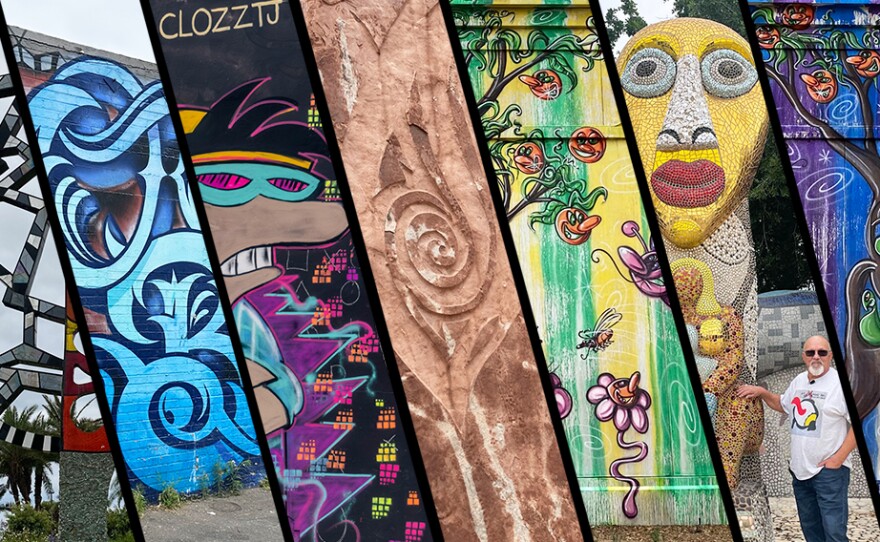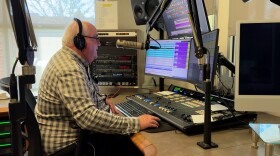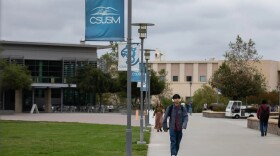Imagine if a museum exposed unique contemporary art to more than 50,000 visitors a day.
But this magical place is not a museum at all. It's the San Diego International Airport. On any given day, travelers can take in dozens of works of art throughout the airport.
It's safe to say that virtually none of the airport's astonishing visitor count is there just to see some art. But in some ways, that’s the point. This unintentional, unwitting glimpse of art and culture is part of the lure of airport arts programs around the world.
There's all of those inputs going into a person's mind. So... finding ways that create this moment where people are like "Oh wait."Daniel Dennert, curator, San Diego Airport
Daniel Dennert is a curator for the art program at San Diego International Airport (or SAN, its airport code). He said that the nature of airport usage means people are hyper-focused on the tasks in front of them, like getting through security, finding the line for coffee, or catching a flight.
"There's all of those inputs going into a person's mind. So finding ways that create this moment where people are like, 'Oh wait,' and they come out of this maybe subconscious rhythm and they really say, 'Oh that is different,'" Dennert said.
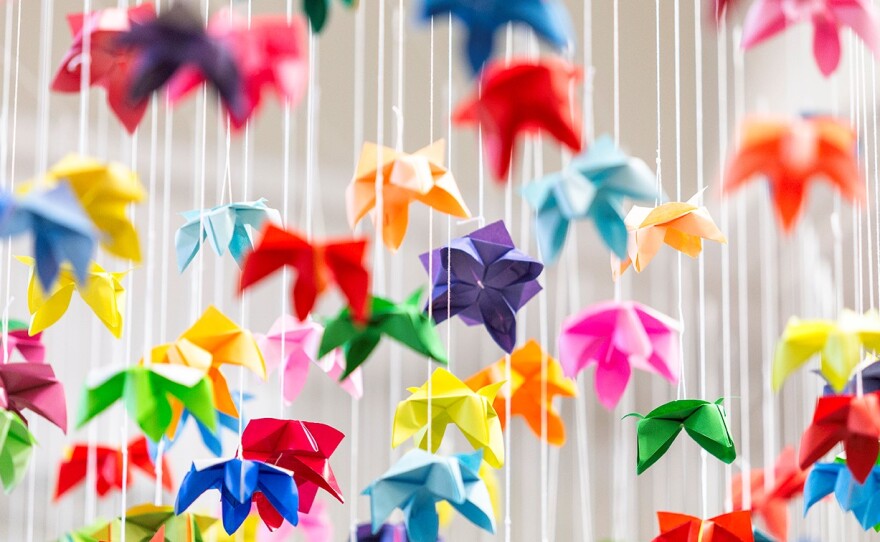
Unlike a street or park that hosts true public art, the airport in San Diego is a private institution, and access is not entirely nor easily available to the general public. But airport art does share characteristics with public art, like enriching an otherwise non-art experience. And art in unexpected, surprising places is at the heart of what public art means.
Katie Norman, airport art program manager at SAN, said the art has tangible purposes, beyond the aesthetics.
"Airports across the country have actually started creating these art programs that include public art, largely because they provide a sense of place," Norman said. "So as soon as you step off the plane, you know that you're in San Diego, but also because it helps with things like wayfinding; it helps with the passenger journey."
Wayfinding, at its core, is a broad term used in navigation for all the signage, tools, paths and design factors that help people move from one place to another. In design and architecture, a key principal in wayfinding is defining the identity of a space or location.
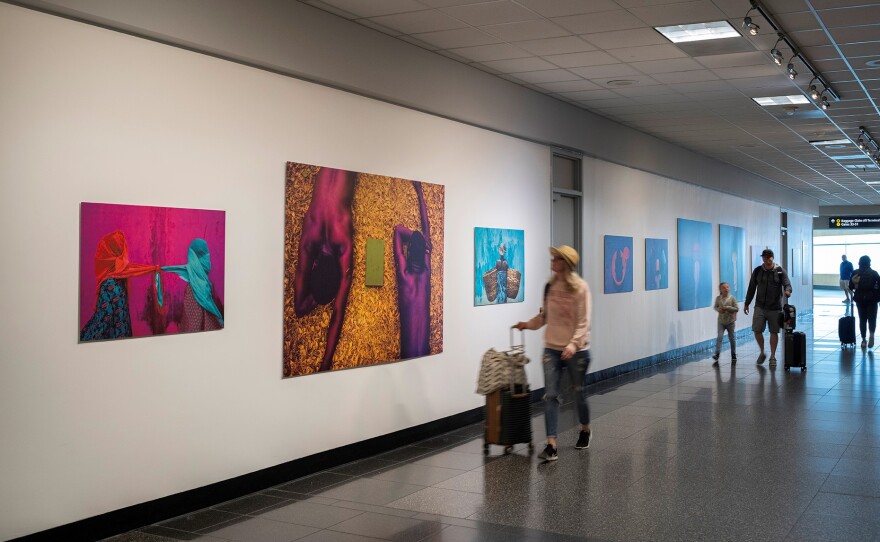
Plus, the airport invests in art in the hopes of improving their customers' experience in a high-stress place.
"There are certain elements to our collection that create calming because this can be a very tough experience for some people traveling," Norman said.
The artwork itself has only become more strengthened because it's been experienced by people outside of art boundaries.Alvaro Alvarez, artist
According to a 2020 study conducted by researchers at the National Academies of Science, Engineering and Medicine, art in the San Diego airport costs just over 2 cents for each passenger who boards a plane, known as an "enplanement." That’s slightly above average among the U.S. airports studied, but similar to airports like San Francisco, with its world-class arts program, and Philadelphia.
In terms of economic benefits, when passengers linger in terminals, they spend more on airport concessions. The program also creates jobs and pays artists. In SAN's arts master plan, the agency measured nearly $45 million dollars in economic impact over a four-year period.
Most airports have some sort of art, but an arts program with a staff, a master plan, rotating exhibits, performances and permanent installations and sculptures — like at SAN — isn't as common. In addition to performing arts and temporary exhibits, San Diego has more than 50 pieces of "public art" that are more permanently integrated into the architecture.
"We do have a robust collection here. I would say that there are about 15 other airports across the country that also have airport programs of a similar caliber," Norman said.
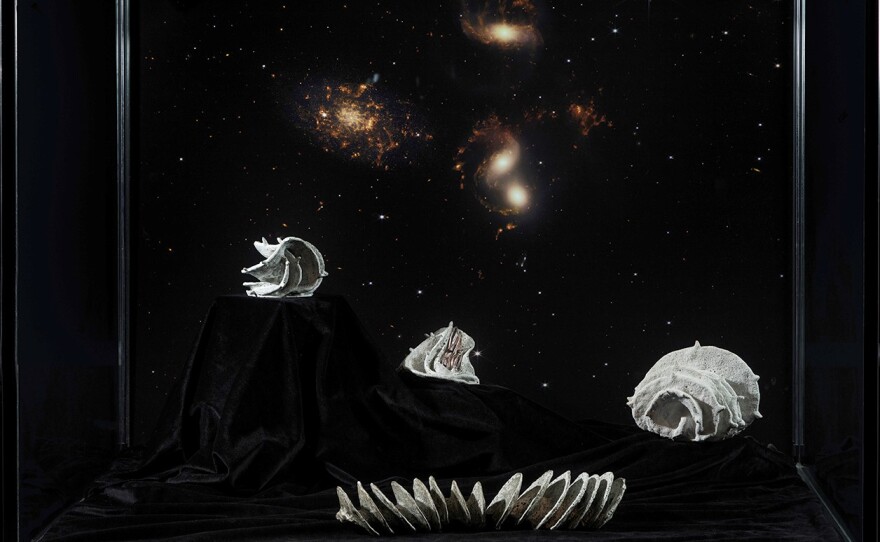
The temporary exhibit on view now is called "A Necessary Departure," spotlighting what artists went through during the pandemic. Some of the works are pre-security, but others are post-security, so visitors need a plane ticket to see them.
In one example, "The Wonders of Plastic," by Terri Hughes-Oelrich, hundreds of lids and caps from single-use plastics are mounted on the wall and suspended from above — like tiny works of art. The installation draws attention to the increased use of disposable products during the pandemic, and the increased urgency for change.
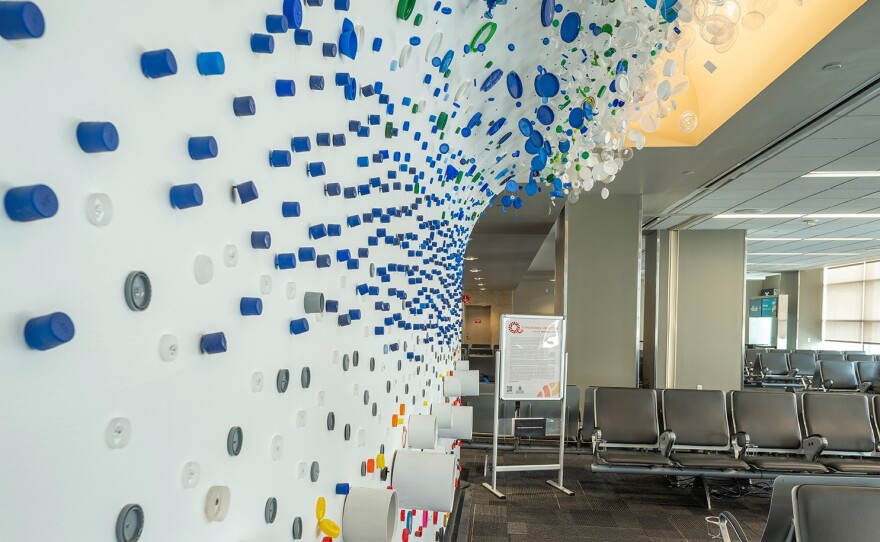
"The idea was you were looking at all these single-use plastics as if we were 10 years down the road and the only way you would be able to see plastic — because you couldn't see it in the store anymore — is by actually going to a museum," said Dennert, the curator.
There's also a gravity-defying sculpture made of old folding chairs by Jamie Franks, puzzle-like wooden portraits by Christopher Lloyd Tucker, cosmic sculptures by Rebecca Webb, a delicate, iridescent murmuration by Kaori Fukuyama and more.
There are 17 unique installations. That doesn't include one by artist Evan Apodaca, whose work "Monumental Interventions" was removed a month after it was installed.
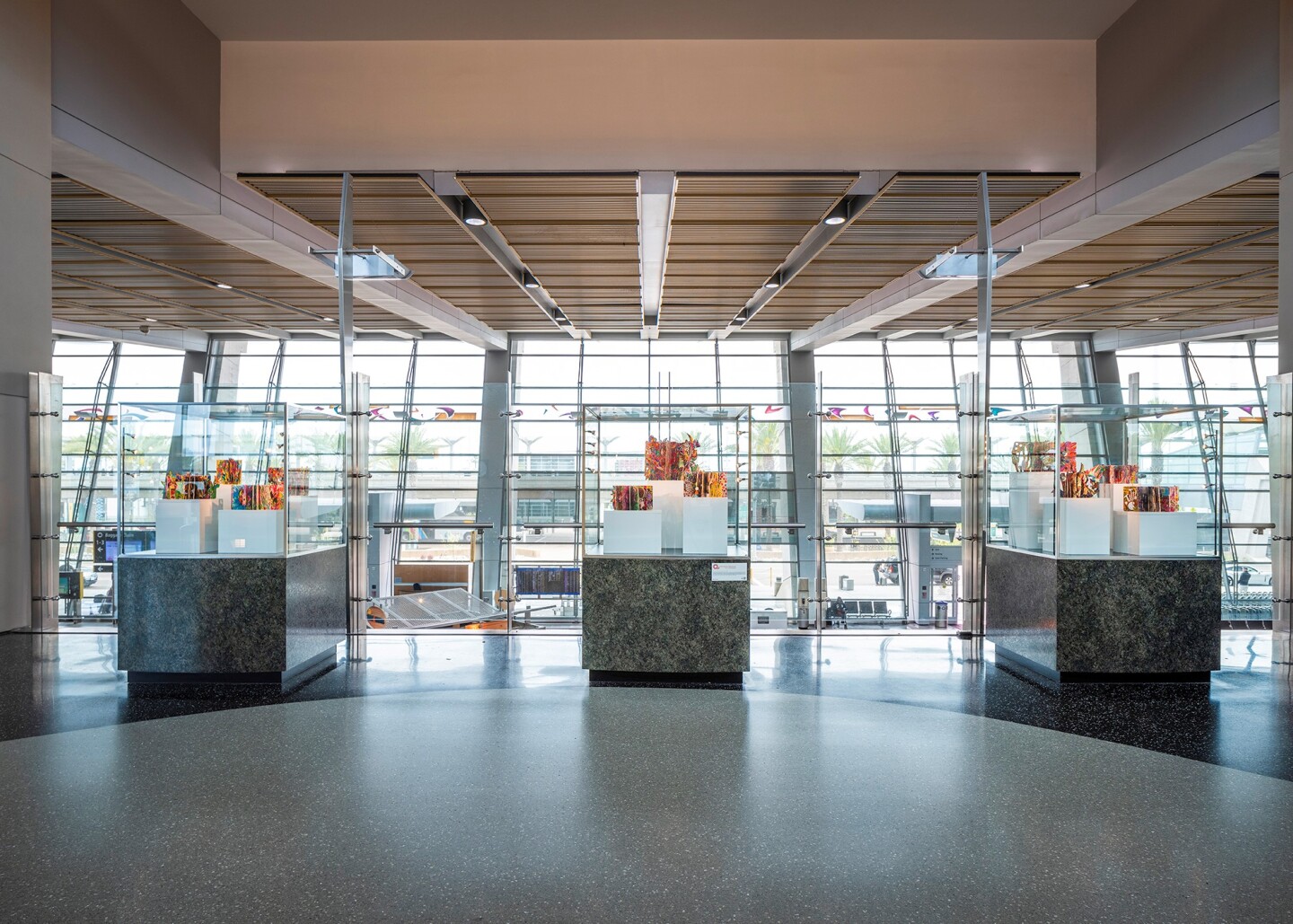
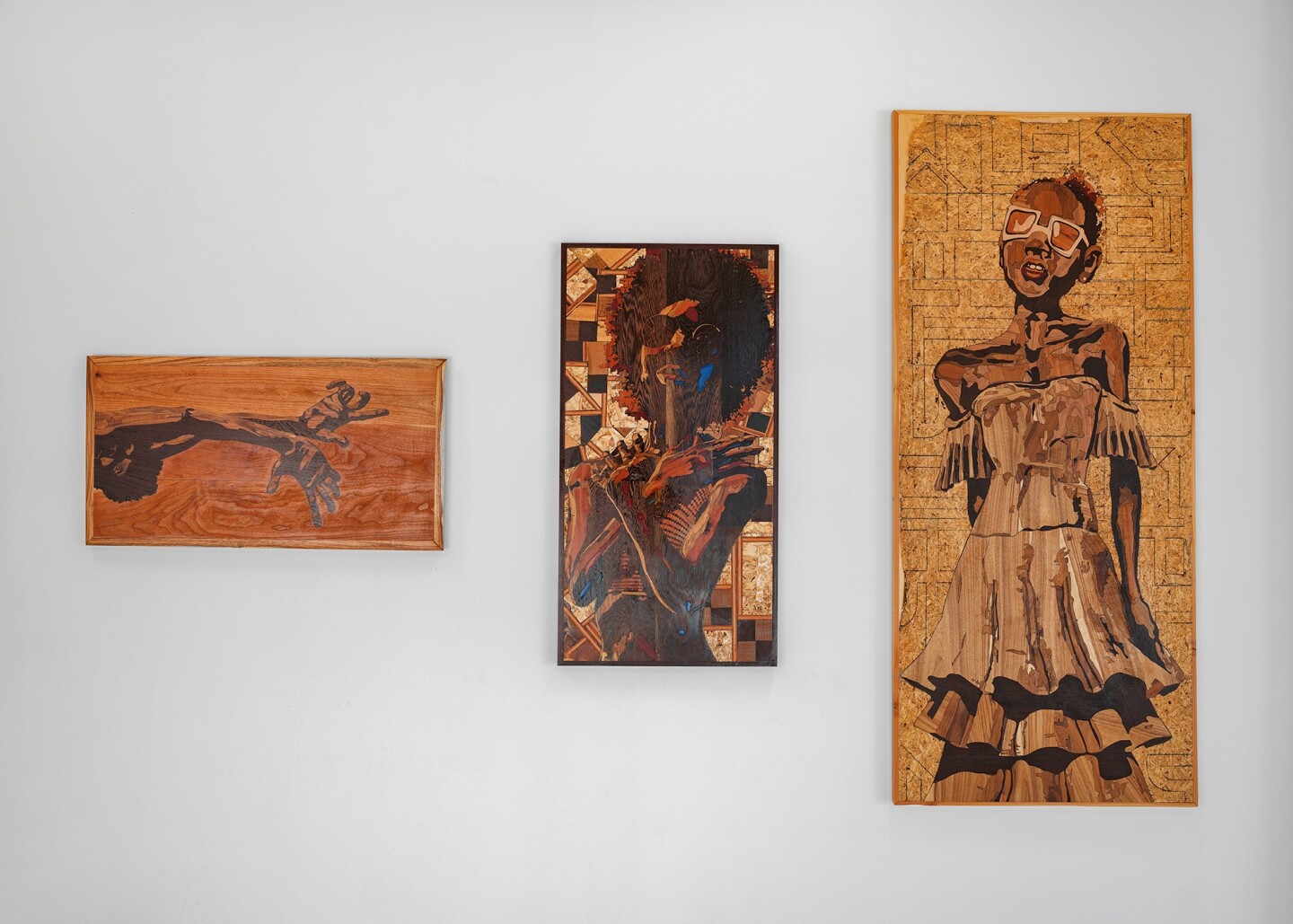
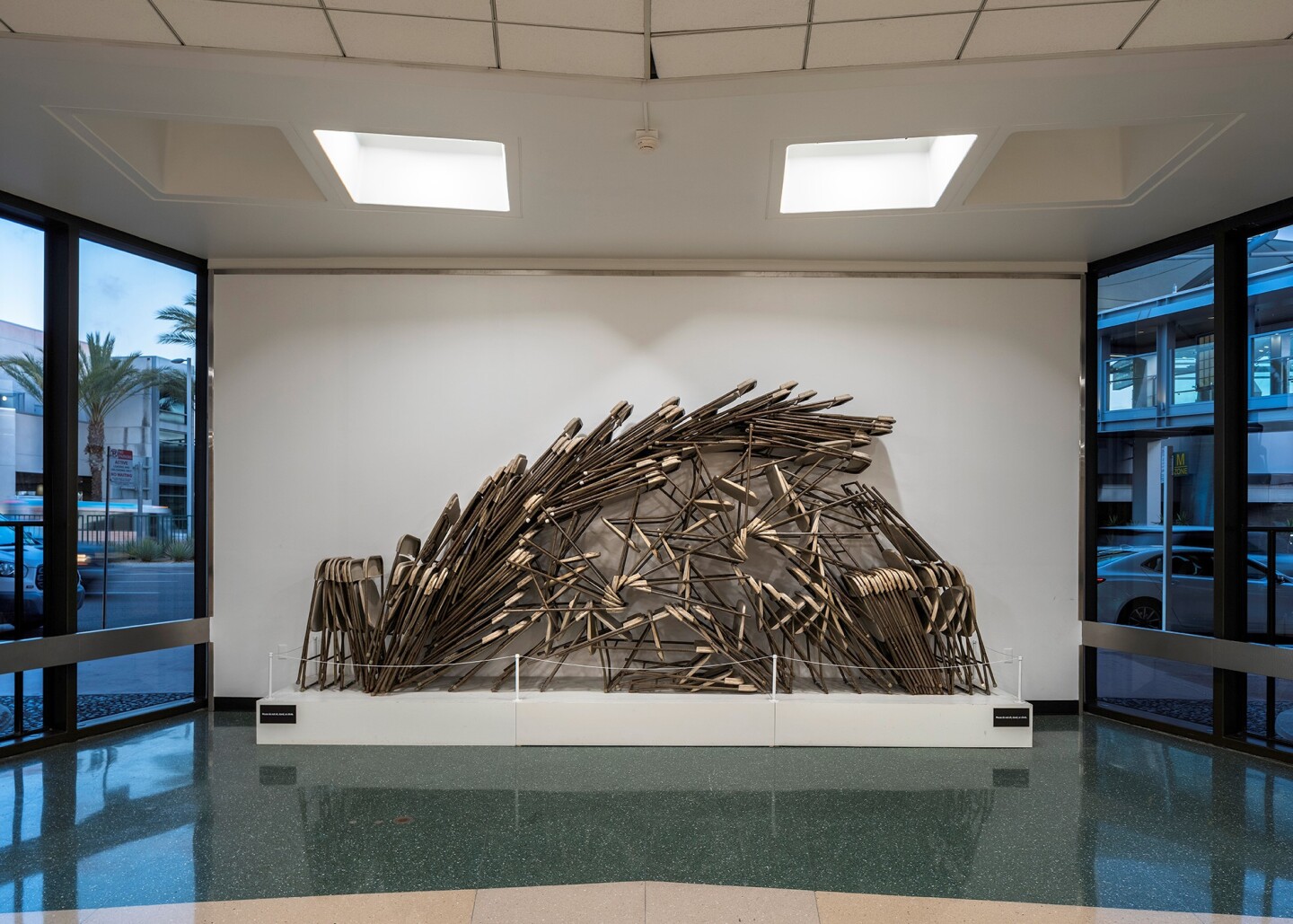
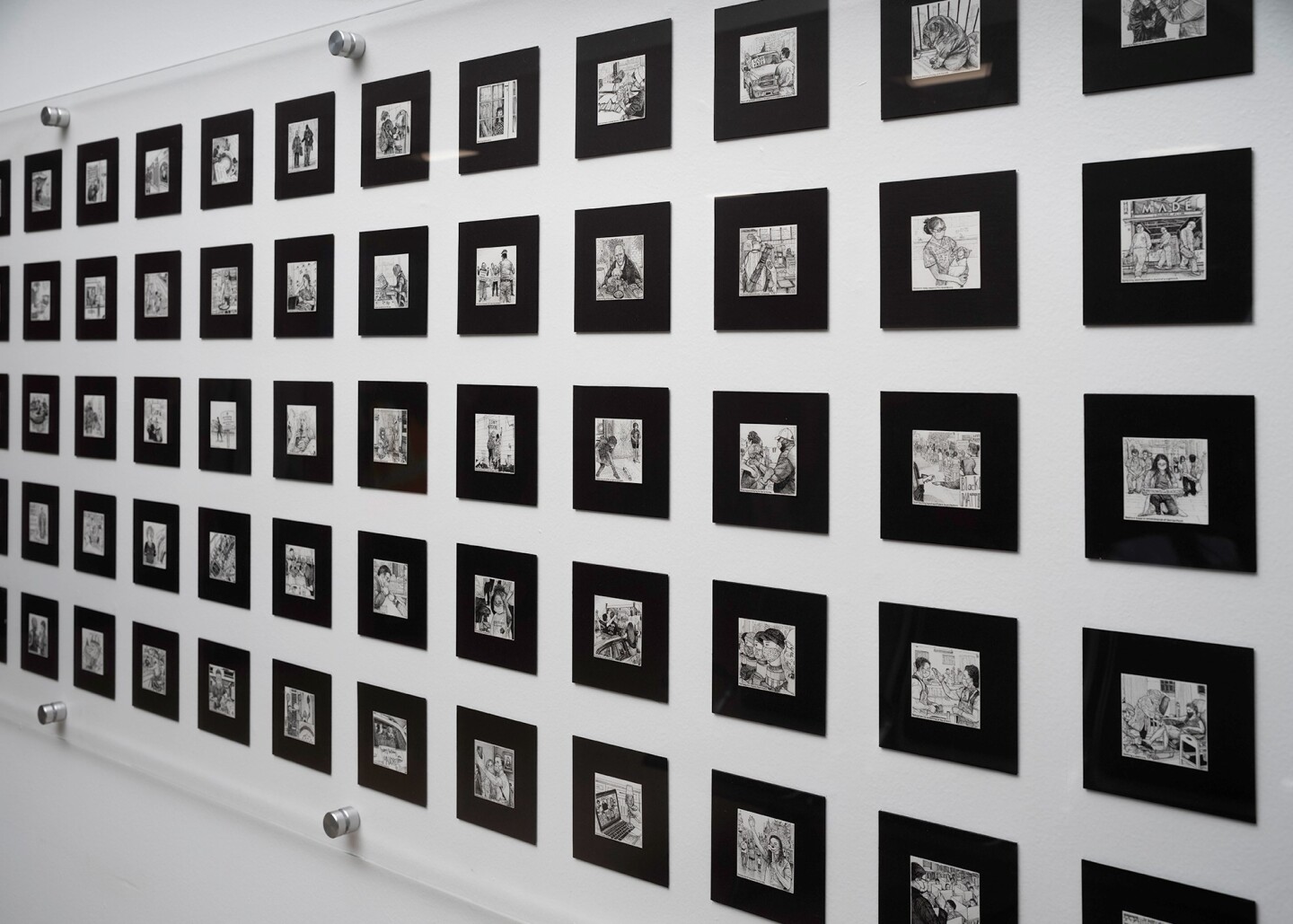
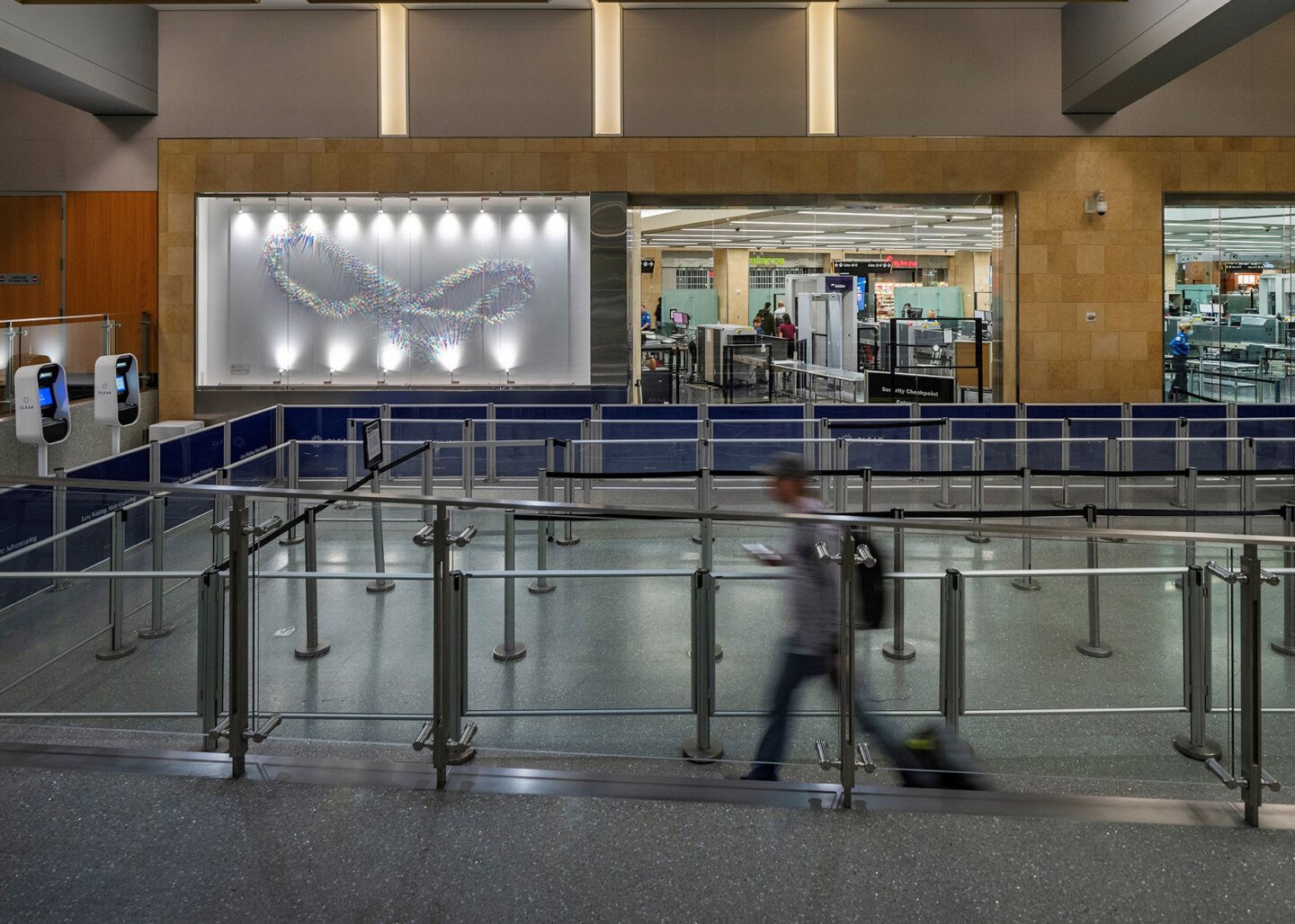
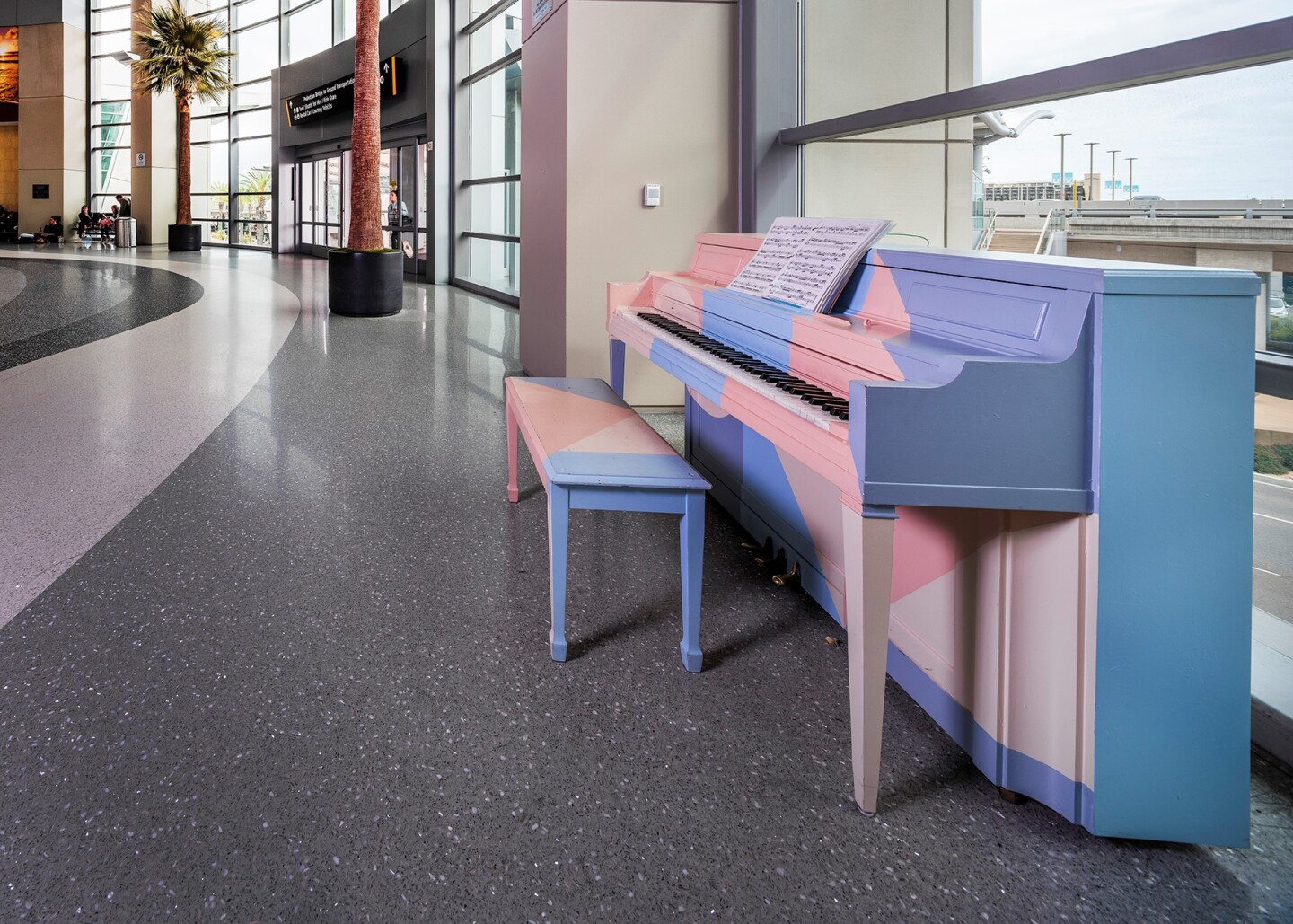
Border artist Alvaro Alvarez's "Imperfect Boundaries" is a series of seven framed pieces, tucked away in the airport’s "Be Relax" lounge.
Shapes and edges, formed from a crowded tangle of painted black ink lines and symbols, represent human and community borders. These borders and boundaries are a big theme for Alvarez.
Every literal gate to a plane is a threshold to cross.Alvaro Alvarez, artist
"I think the artwork itself has only become more strengthened because it's been experienced by people outside of art boundaries. When I describe 'Imperfect Boundaries,' I use our border as a metaphor, between Tijuana and San Diego, but to have an airport setting as a gallery, that is a transient space that filters — is a passageway for people everywhere," Alvarez said. "An airport is essentially, you know, every literal gate to a plane is a threshold to cross."
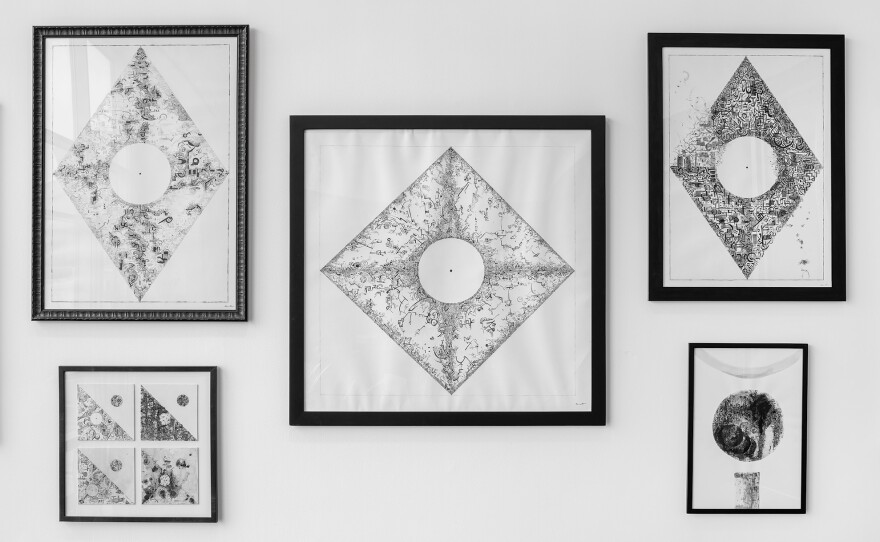
"A Necessary Departure" will be on view throughout Terminal 2 until the end of the year. So harried holiday travelers still have time for an unexpected piece of art to grab their attention as they dash to their gates.
The airport’s next temporary exhibit, "Espacios and Lines," is planned for early next year.


